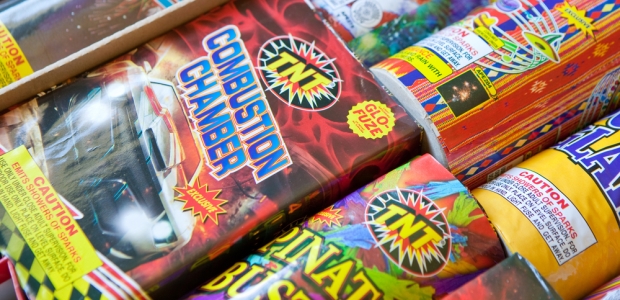
The Dangers of Consumer Fireworks
The Consumer Product Safety Commission received 11 reports of nonoccupational fireworks-related deaths during 2015 and the highest number of injuries, 11,900, treated in U.S. hospital emergency departments in the past 16 years. Most injuries occur around the Fourth of July holiday.
It's that time of year again -- fireworks season. The National Fire Protection Association is reminding the general public that consumer fireworks are a bad and potentially dangerous idea.
How dangerous are they? The Consumer Product Safety Commission's most recent report on fireworks casualties, posted on June 27, 2016, says CPSC received 11 reports of nonoccupational fireworks-related deaths during 2015 and that year saw the highest number of injuries, 11,900, treated in U.S. hospital emergency departments since 1999. Most injuries occur around the Fourth of July holiday.
An estimated 1,900 injuries treated in emergency departments that year were related to sparklers, and an estimated 800 were associated with bottle rockets.
Fireworks are the cause of an average of 18,500 fires per year, including 1,300 structure fires, 300 vehicle fires, and 16,900 outside and other fires, according to NFPA. It says these fireworks-related fires caused an average of three deaths, 40 civilian injuries, and an average of $43 million in direct property damage.
Among the 11,900 people treated for fireworks injuries, 51 percent suffered injuries to their extremities and 41 percent suffered head injuries, with children younger than 15 years of age accounting for 26 percent of the estimated 2015 injuries, according to the CPSC 2015 Fireworks Annual Report by Yongling Tu of the Division of Hazard Analysis.
Michigan's state fire marshal, Kevin Sehlmeyer, also pointed out the risks associated with consumer fireworks on June 26, especially the more powerful consumer-grade fireworks: firecrackers, bottle rockets, and Roman candles. "The safest way to enjoy fireworks is professional displays. If you do plan to shoot your own fireworks," he said, "remember these are explosives and that, if used incorrectly, can cause irreparable injury and harm. Certified fireworks retailers aim to make safety their top priority."
In Michigan, consumer fireworks became legal Jan. 1, 2012; they must meet CPSC standards and may be sold only to people 18 or older. Low-impact fireworks (ground-based items such as sparklers, toy snakes, snaps, and poppers) are legal for sale and use. State law requires that consumer-grade fireworks be ignited from personal property only. It is illegal to ignite fireworks on public property, school property, church property, or another person's property without their express permission, and it is illegal to discharge fireworks when intoxicated or under the influence of drugs. "The Bureau of Fire Services fire inspectors are issuing citations to sellers who are non-compliant with the Fireworks Safety Act," Sehlmeyer said. He said consumers should always buy from state-certified fireworks retailers.
"If consumer fireworks are used at home, be sure to check local ordinances for other limitations on the use of fireworks," he added. "Never consider sparklers as harmless for the kids. A significant number of young children are being injured by being poked with sparkler wires and are being badly burned by sparklers each year per the CPSC."